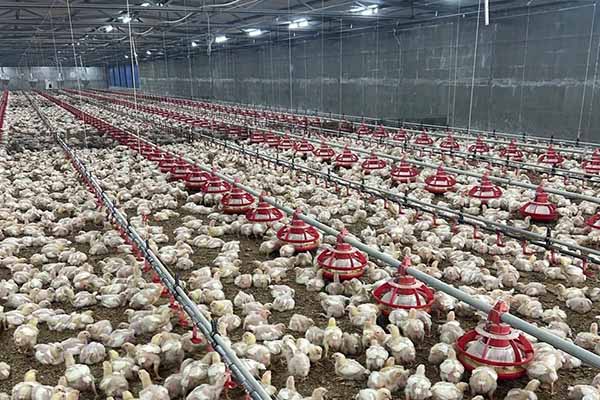Automated Ventilation System Plan for Chicken Farms in Tanzania
Time : 2025-07-01
Automated ventilation systems play a crucial role in ensuring the health, productivity, and overall well-being of chickens in poultry farms. In Tanzania, where the poultry industry is rapidly growing, implementing an efficient and effective automated ventilation system is essential. This article provides a detailed plan for an automated ventilation system specifically tailored for chicken farms in Tanzania, incorporating professional knowledge of poultry equipment and technology.
Introduction
The poultry industry in Tanzania has witnessed significant growth over the past decade, with an increasing demand for poultry products. To maintain optimal conditions for chicken growth and to prevent diseases, an automated ventilation system is indispensable. This system not only ensures the right balance of air quality but also controls the temperature, humidity, and CO2 levels in the farm.
Key Components of an Automated Ventilation System
1. Fan Motors and Blowers
Fan motors and blowers are the backbone of any ventilation system. They circulate air throughout the poultry house, maintaining the desired air exchange rate. For chicken farms in Tanzania, it is essential to select fan motors and blowers that are capable of withstanding harsh environmental conditions, such as high temperatures and humidity.
2. Control Panels and Sensors
Control panels and sensors are responsible for monitoring and controlling the ventilation system. They provide real-time data on various parameters, such as temperature, humidity, CO2 levels, and wind speed. Based on this data, the control panels adjust the fan speed and operating mode to maintain optimal conditions for the chickens.
3. Air Filters and Intake Screens
Air filters and intake screens are crucial for maintaining air quality in the poultry house. They prevent dust, feathers, and other contaminants from entering the house, which can lead to respiratory problems in chickens. For farms in Tanzania, it is important to use high-quality filters that are efficient in removing particulates and pathogens.
4. Exhaust Fans
Exhaust fans play a vital role in removing stale air and excess heat from the poultry house. They ensure that the air exchange rate is sufficient to maintain a healthy environment for the chickens. In Tanzania, it is important to use exhaust fans that are energy-efficient and durable.
Plan for Automated Ventilation System in Chicken Farms in Tanzania
Step 1: Farm Assessment
Before implementing an automated ventilation system, a thorough assessment of the chicken farm is necessary. This includes evaluating the size of the farm, the layout of the poultry houses, and the existing infrastructure. It is important to consider the climate and weather conditions in Tanzania, as they will greatly influence the design and operation of the ventilation system.
Step 2: System Design
Based on the farm assessment, a custom-designed automated ventilation system should be created. This includes selecting the appropriate fan motors, control panels, sensors, air filters, intake screens, and exhaust fans. The system design should ensure a balanced air exchange rate, optimal temperature, humidity, and CO2 levels.
Step 3: Installation
The installation of the automated ventilation system should be carried out by skilled professionals. It is important to ensure that all components are installed correctly and that the system is properly calibrated.
Step 4: Training
Farm workers should be trained on how to operate and maintain the automated ventilation system. This includes understanding the control panels, sensors, and how to respond to alarms and alerts.
Step 5: Monitoring and Maintenance
Regular monitoring and maintenance of the automated ventilation system are essential to ensure its proper functioning. This includes checking the fan motors, blowers, filters, and sensors, as well as adjusting the system settings based on the farm’s specific needs.
Conclusion
An automated ventilation system is a critical component of a successful chicken farm in Tanzania. By following this detailed plan, poultry farmers can ensure a healthy, productive environment for their chickens, leading to improved yields and profitability. As the poultry industry continues to grow in Tanzania, the implementation of efficient and effective automated ventilation systems will be essential for its long-term success.
Tags












